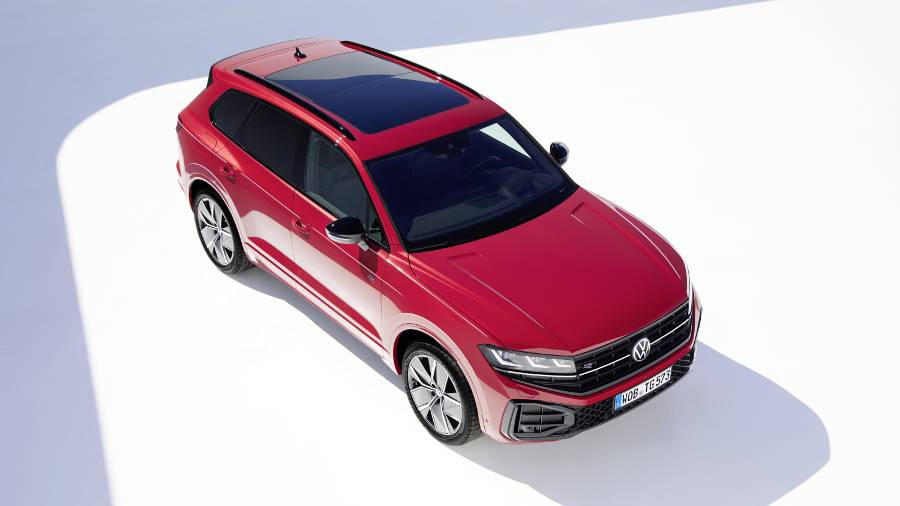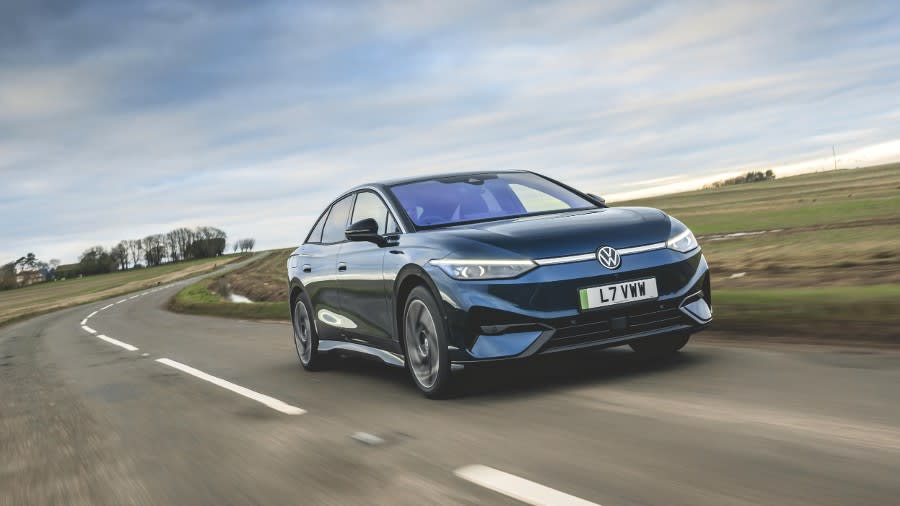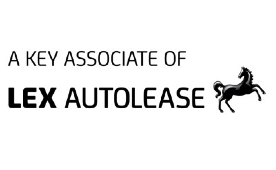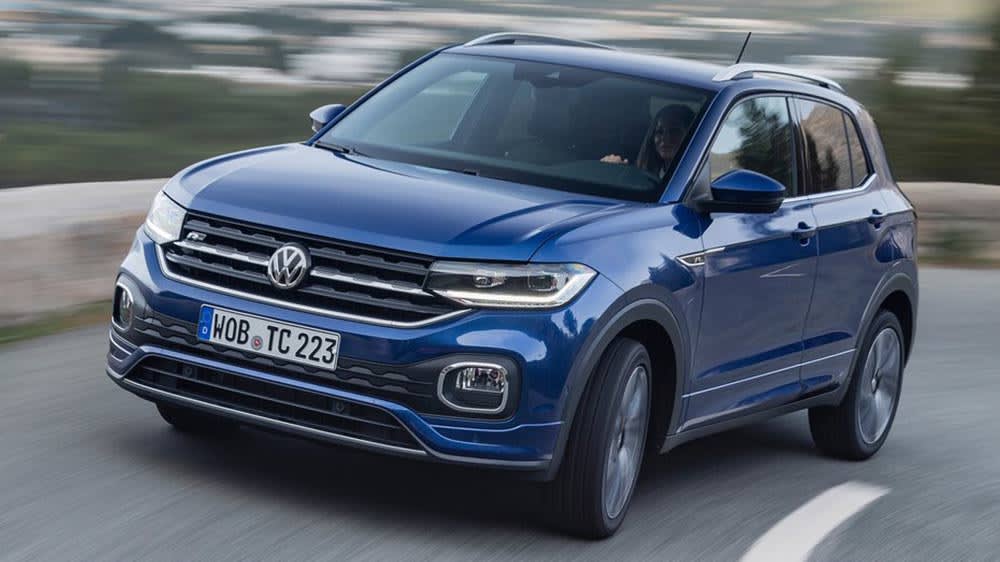
Volkswagen T-Cross Review

Introduction
There’s barely any difference in size between a T-Cross and the T-Roc, with the Roc being just 12cm longer than the Cross. However, more importantly, there’s less than 4cm difference between their respective wheelbases.
So why build two broadly similar SUVs? The argument is that the T-Roc is the car for the cool kids, bold and bright with a bit of bling about it, while the T-Cross is the sensible, practical and dour model for the family buyer who just needs transport.
Well, they’re wrong. There is much to like about the T-Cross, a compact SUV that’s got just as much personality as the T-Roc - you’ve just got to work a bit harder to find it.
Review Sections
Select's rating score* - 4.0 / 5
At a Glance
It might be based on a Polo, but you’d never know as the T-Cross looks like a proper SUV. Not necessarily the most exciting SUV, but an SUV all the same.
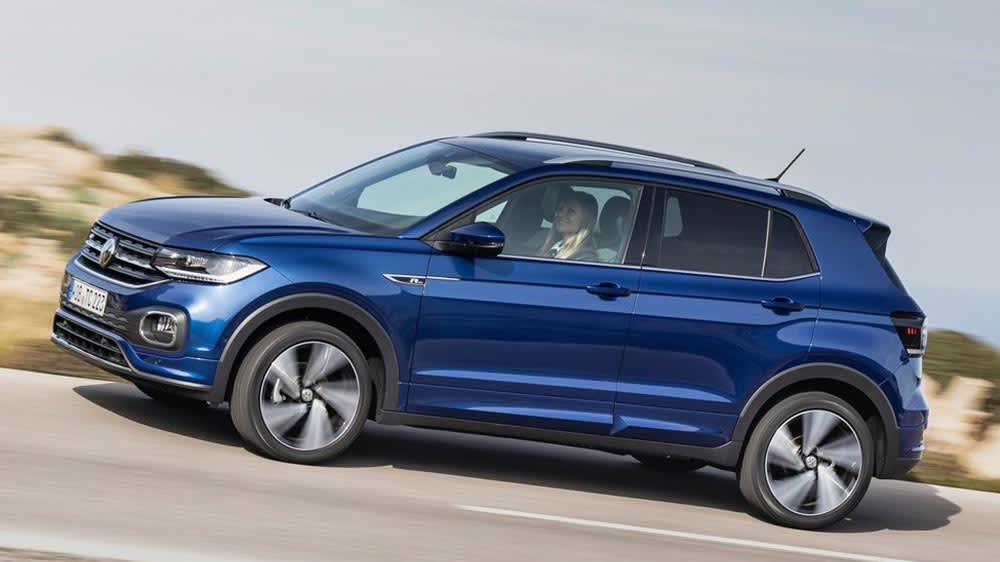
As one of Volkswagen’s sensible models, there’s a limited range of sensible engines (so no hot ‘R’ version of rugged ‘Alltrack’ models) and carefully considered trim levels. But to think of the T-Cross as being a dour rival to visually exciting models like the SEAT Arona is to be mistaken. This might just be one of Volkswagen’s finest models…
Key Features
Despite being the sensible, grown-up option in Volkswagen range of two compact SUVs, there’s an impressive range of customisation options available for the T-Cross.
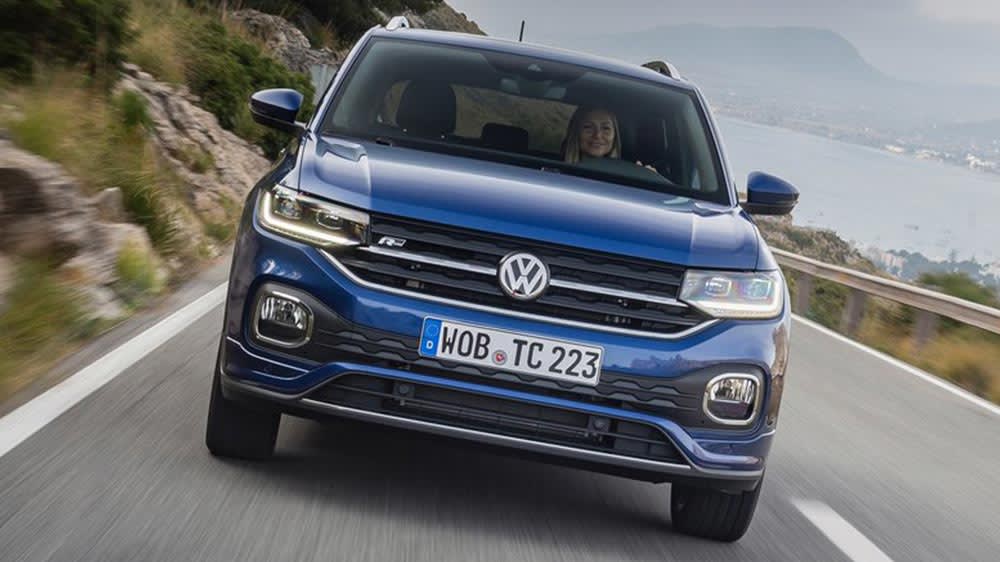
Five trim levels lets you get close to what you want to start with, but then you can choose some bold colours, such as Energetic Orange or Reef Blue, and bright interior trim like a smart black and orange combination. You can even pick out some bright dashboard inserts, making it feel every bit as young and lively as a T-Roc.
Performance & Drive
You’ll likely be choosing a T-Cross with a 1.0-litre engine, as that’s the one that’s fitted to 90% of the range. It’s a cracking little three-cylinder petrol engine, available in either 95 or 110hp variants. There’s also a 95hp diesel model, and an excellent 1.5-litre petrol that produces 150hp.
Our test car is in 1.0-litre 110hp form, and it’s probably the best choice. It’s mated to a seven-speed automatic gearbox, which is arguably unnecessary and impacts both performance and economy. Ignore the auto box and the 110 will power itself to 62mph in 10.8 seconds.
You’ll not notice a huge drop in performance by opting for the cheaper 95hp, but it’s enough to get a tad frustrating. The 150 EVO model is a little rocket ship, but gets very expensive, while the diesel costs quite a bit more but offers little extra economy.
All models do a remarkable job of covering motorway miles, feeling far larger and more stable than its dimensions might suggest. Even large trucks can’t blow the T-Cross off course, but that stability doesn’t translate into anything resembling exciting.
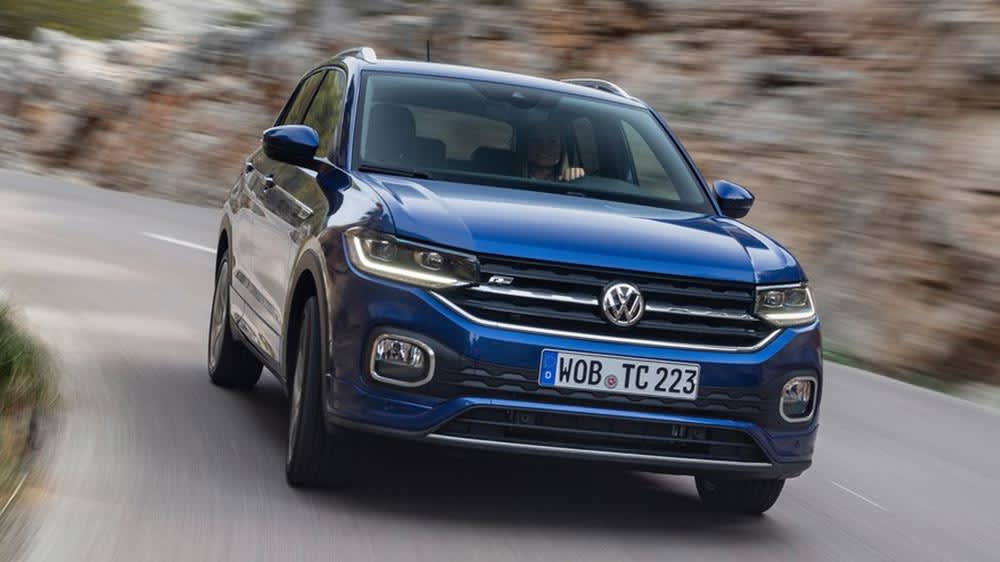
It takes corners in an entirely predictable fashion, without drama or engagement. Push too hard and it just gently understeers, reminding you that you can’t play too hard.
The flip side is the ride quality is impressive, with a suppleness that smoothes most undulations. It feels a little firmer in town, as the 17-inch wheels allow more of those cracks and pothole edges to get through to the cabin, but there's nothing that will annoy you.
Even that three-cylinder engine is kept distant in that the vibrations and noise it generates are damped nicely. It remains quiet when pushed hard, too, although the engine note isn’t exactly soulful.
Running Costs
Being the sensible half of the Cross/Roc double act, it’s no surprise that you’ll barely need to spend a penny to keep the T-Cross running. A relatively low leasing cost, low insurance groupings and fixed price servicing options make it positively penny-pinching.
This 1.0-litre test car, with its seven-speed automatic gearbox, promises 44.0mpg officially. After a week touring the UK’s roads, the trip computer shows 43.0mpg which, even allowing for some optimistic calculations, is pretty darn close. Even the thirstiest model in the range offers 42.8mpg, while the most frugal reaches the giddy heights of 54.3mpg.
Relying, for the most part, on that 1.0-litre engine should mean that emissions are kept in check, but the T-Cross emits more CO2 than you might hope for.
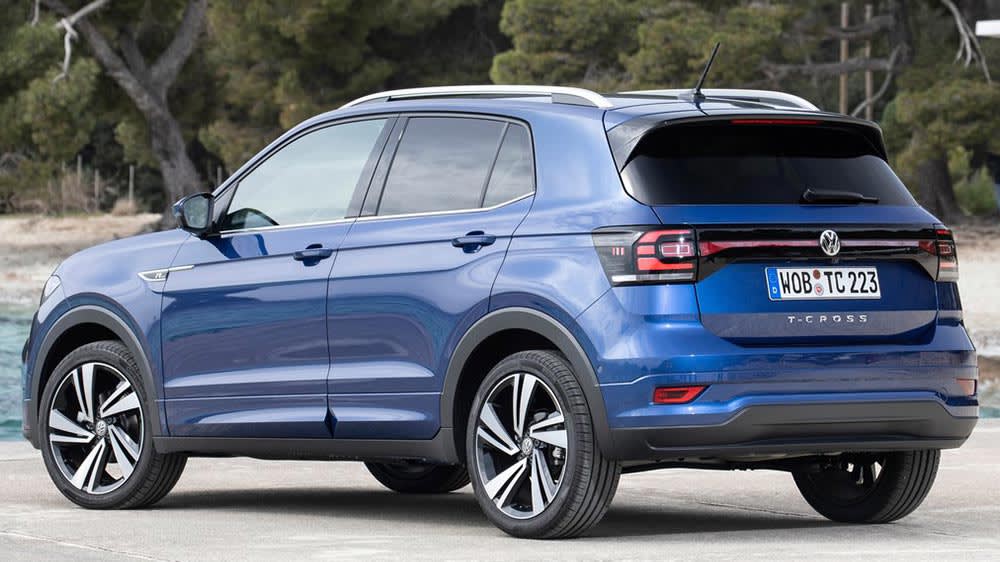
Our test car’s 146g/km is surprisingly high, but all of the automatic gearbox equipped models see quite an uplift. That said, the best you’ll get is 132g/km from the petrol model, making for a BIK rate of 29% for company car drivers.
Don’t think you’ll make any inroads into that with the diesel models. Unusually, they emit more CO2 than the best petrol options, ranging from 136 to 146g/km. They’re not RDE2 compliant either, so get hit with an extra 4% BIK penalty.
Interior
While the T-Roc gets some of the high tech kit found in more expensive models, the T-Cross reveals it’s Polo roots with its sombre, unadventurous interior. It’s not that it’s bad, but there’s little flair, revelling in straight lines and sensible ergonomics rather than exciting design and brash digital upgrades.
A little too much of the interior has been covered in hard, scratchy plastics, too. The door panels, for example, could do with a covering of cloth, which seems to be a little bit of a stingy oversight on a car costing 20 grand or so.
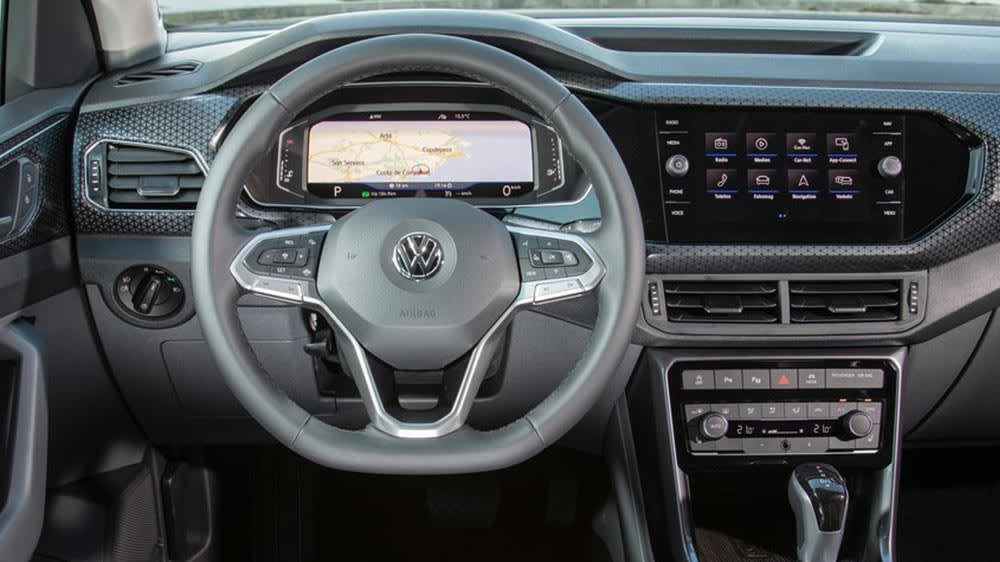
There are plenty of options to enliven the cabin though, including a pack that adds Energetic Orange highlights and trim around the car, which can be repeated on the outside if you’re feeling brave.
There’s plenty of equipment to keep you distracted from the ‘robust’ plastics, with even the entry model being kitted out with an eight-inch touchscreen, DAB radio, double Bluetooth connectivity and air conditioning. You need to move up to the SE to take advantage of Android Auto or Apple CarPlay, but you’ll also get fog lights, a leather-covered steering wheel, adaptive cruise control, and automatic lights and wipers.
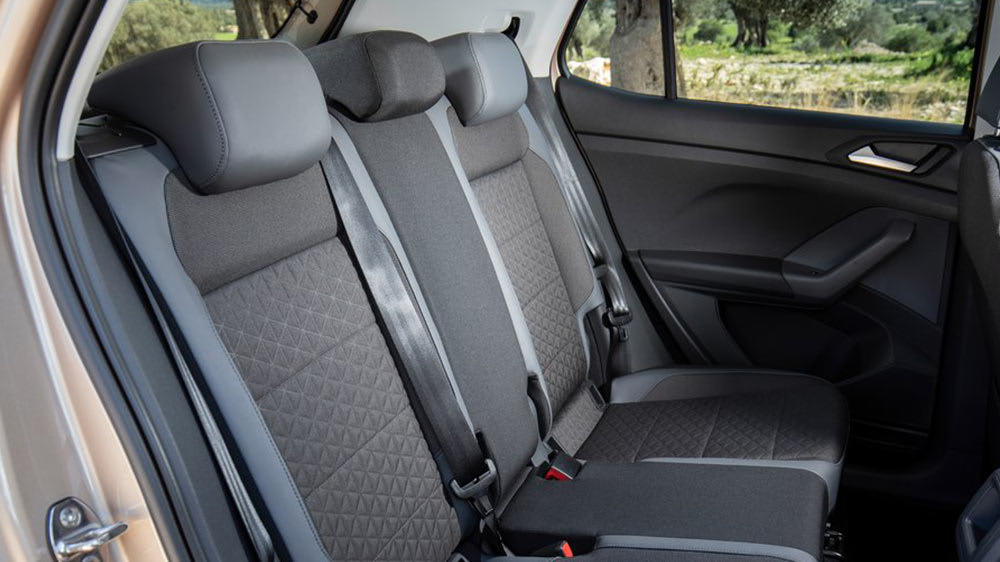
As is the trend, most vehicle controls end up being operated via the touchscreen, but there’s one old-school feature still in place - there’s a proper handbrake!
In building a car that doesn’t appear to offer anything particularly unique in the market, Volkswagen has decided to not thrust all sorts of tricky technology into the T-Cross. There’s no four-wheel-drive system, and therefore no goodies like hill descent control or dynamic torque vectoring.
It’s just a good value SUV, based on a small hatchback, and so doesn’t get expensive touch-sensitive door handles, head-up displays or laser lights. What you do get is an 8.0-inch infotainment screen in every model, although you need to go up the grades to see if work with Android Auto or come fitted with navigation.
Every model gets We Connect preparation. With a suitable smartphone, you can download the Volkswagen We Connect app and start talking to your car - the system provides continuous interaction between the driver, vehicle and Volkswagen, allowing Volkswagen to keep an eye on the service elements, and call the emergency services in the event of an accident. You’ll be able to find out whether you’ve left the lights on or doors unlocked, check your driving data, get a vehicle health report, or any of the other functions the system has.
Practicality & Boot Space
Given that the T-Cross is based on a Polo, expectations are low but, if we start right at the back of the car, there’s an impressive amount of space. The boot can take 385 litres of cargo, which is slightly more than you’ll find in the Volkswagen Golf.
The rear seat slides back and forth, so it’s possible to extend that to as much as 455 litres which, coincidentally, is the same as you’ll be able to squeeze into a T-Roc.
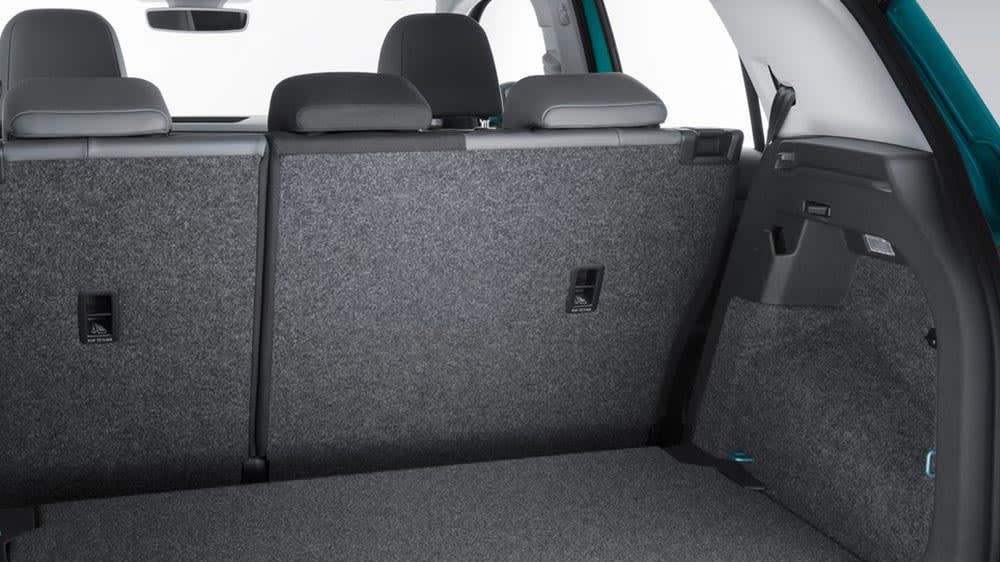
You’ll still have room for some passengers in the back at that point, but only just. Leave the rear seat in place and you can easily place four adults in the car, with room to spare.
Safety
The T-Cross is based on the same MQB chassis that underpins the likes of the Golf and Passat, and much of the rest of the Volkswagen range. It’s gone through some changes, obviously, but it carries over the same strengths, which translates into a full five-star safety award from Euro NCAP’s crash testing programme.
Volkswagen has ensured every model is as safe as budgets would allow, with even the entry-level S grade receiving a radar-sensor controlled distance monitoring system, an automatic emergency braking system that can pick up pedestrians and cyclists, lane-keeping assist, airbags all around, and Isofix preparation for two child seats.
Move up the models and you'll find speed limiters, parking sensors, and even a driver fatigue monitoring system. Perhaps because it’s a small car with an upright rear, a reversing camera remains an option across the range.
Options
Volkswagen has given the T-Cross trim levels some unfathomable names. It starts easy, with the entry-level S being well equipped, with the more expensive SE gaining extra equipment such as 17-inch alloy wheels, adaptive cruise control and Android Auto and Apple CarPlay.
Then it jumps to the United trim, which adds tinted rear windows, LED reading lights and parking sensor, but drops back down to 16-inch wheels.
Normality returns with the SEL, which brings back 17-inch wheels. This model is loaded with kit, from climate control and automatic LED headlights, to a navigation system and sports seats.
Finally, the R-Line tops the range, sacrificing some of the kit from the SEL and replacing it with sporting design touches like a rear spoiler and paddle shifters for the automatic gearbox models. The infotainment is upgraded to an impressive 10.3-inch system, though, and the instrument panel is replaced with a digital screen.
Some design packs add more vibrant paint, interior trim and wheel; choices, With names such as Energetic Orange and Bamboo Garden Green, you know they’re not going to be subtle.
While there are plenty of options to choose from, you’ll do better by picking the right trim level for your needs first. SE comes with everything you need, and SEL has almost everything you might want, and the price difference isn’t too significant, especially when broken down to monthly leasing payments.
Who Rivals The Volkswagen T-Cross?
The SEAT Arona shares so much with the T-Cross that you could almost imagine it to be a twin, but there’s a fair bit to separate them. The Spanish-infused Arona is more entertaining to drive, and is a little bit cheaper to buy than the T-Cross. The exterior also has a little more style to it, but it ends there - the T-Cross, especially with the optional colour packs, is a far more inviting place.
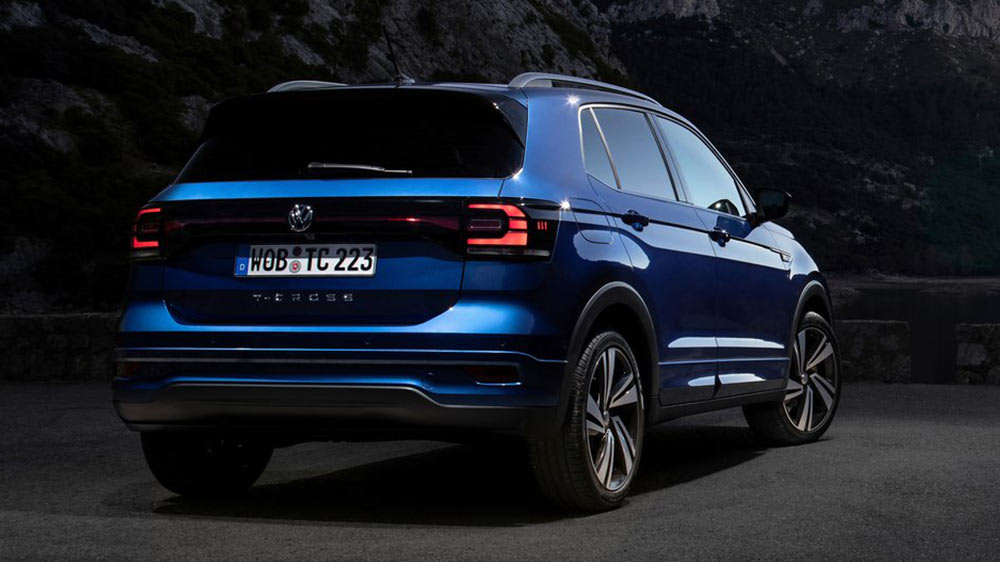
Ford’s new Puma is, arguably, the best compact SUV out there right now, which makes it tough for the T-Cross. Interesting external styling (if possibly a little divisive) draws more attention to the Puma, while it’s every bit as practical. Ford’s Ecoboost engines are also seriously economical, but probably not by enough to swing a decision. The ride quality can get a little rough, though.
People forget about the Kia Stonic, lost in the fog of more than 20 similar vehicles from other manufacturers. Do take a look though, as the strong handling (albeit with a rather firm ride), practical interior and impressive seven-year warranty could suit you well.
Finally, there’s the T-Cross’s cousin, the Volkswagen T-Roc. It’s marginally bigger and slightly better to drive, with a soupcon of extra style. There is, of course, a convertible version available which is something you won’t find available from any rival, and you can keep spending all the way up to a 300hp hot R version.
Verdict & Next Steps
There’s a good argument to be made that the T-Cross is an SUV by numbers. It doesn’t shout about its abilities, offering a sensible and appealing balance of the kind of things you need when looking for a compact SUV.
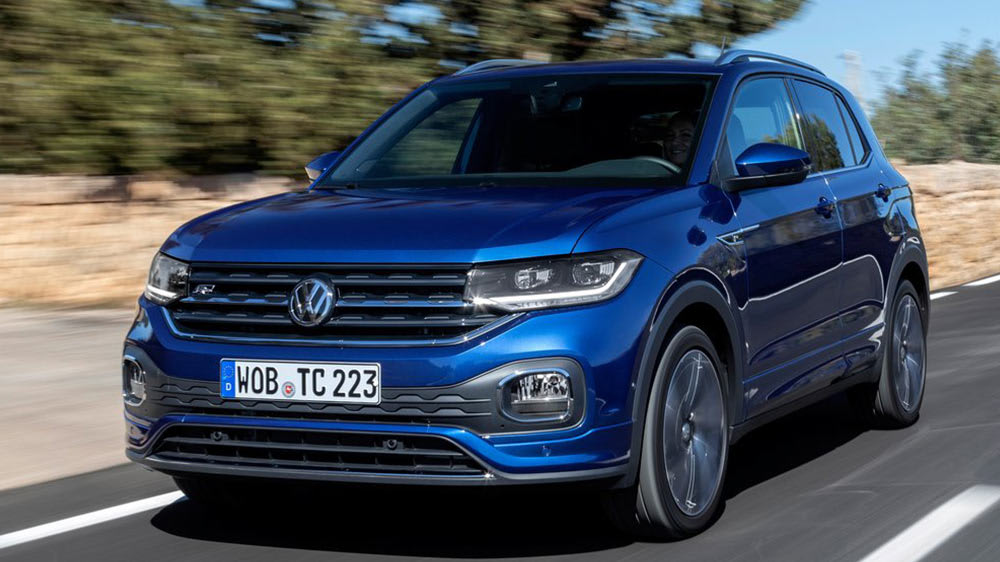
That might leave the T-Cross struggling to attract attention in a market awash with capable (and less than capable) rivals, especially when there’s no plug-in hybrid or electric options.
However, look a little more closely and you’ll find that the T-Cross does everything to such a high standard that you’ll start to realise that the sum is far greater than its parts. In one of the finest cars of its type, hiding in plain sight.
Where to next?
View latest Volkswagen T-Cross leasing deals - from £171.43 per month inc VAT**
Looking for a great deal? Check out our incredible range of car lease deals
New luxury SUV? Read our latest Car Reviews and find the right model for you
Want to know more about leasing? Take a look at our comprehensive Leasing Guides
Interested in everything motoring? Why not catch up on all the latest Car Leasing News.
*Score based on Select’s unique meta score analysis, taking into account the UK’s top five leading independent car website reviews of the Volkswagen T-Cross
**Correct as of 22/01/2021. Based on 9 months initial payment, 5,000 miles over a 48 month lease. Initial payment equivalent to 9 monthly payments or £1,542.89 Ts and Cs apply. Credit is subject to status.
